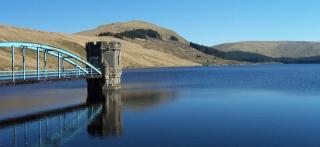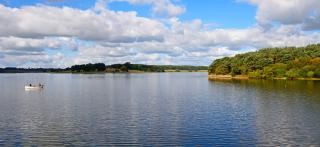Hydro-Logic Aquator enables Northumbrian Water to develop critical water resource management plan
Situation
Water supply companies in England and Wales are required to complete water resource management plans (WRMPs) every five years.
The latest set of plans, referred to as WRMP24, has a requirement to ensure water resources needs are met over the next 25 years and beyond.
A key requirement for this planning round is to ensure drought resilience to a 1 in 500-year frequency (for emergency drought orders) by 2040. This needs to be taken into account in supply forecasts as part of the overall assessment of the supply-demand balance to ensure reliable, resilient water supplies in the future.
Problem
The latest regulatory guidance for WRMP24 introduced a step change in the sophistication of Deployable Output (DO) assessment to assess available supplies. The new methods focus on system response (using the ‘Scottish DO’ technique) for complex systems to assess the 1:500-year resilience level for Level 4 drought interventions.
These assessments provide a greater focus on risk compared to previous plans, which require the use of long periods of stochastic data (typically 19,200 years). Models need to be tested across a range of demands and climate change scenarios.
Northumbrian Water Group operates as Northumbrian Water (NW) in the north of England, and as Essex & Suffolk Water in the east of England; in order to develop its plan for WRMP24, Northumbrian Water Group required expert modelling support for DO assessments for its NW operating area.
Solution
NW selected the Hydro International Data, Insight & Analysis team as its modelling partner, as the team has exceptional experience in DO assessment with Hydro-Logic® Aquator as the modelling platform.
The modelling work complemented strategic planning work by Hydro-Logic® Services as part of the Water Resources North (WReN) regional planning group, for which NW is a constituent company.
The overarching scope of the project was to undertake DO modelling in Aquator XV/XM for NW’s WRMP24 submission using stochastic hydrology. In addition to the baseline case, 40 probabilistic UK Climate Projections 2018 (UKCP18) scenarios were modelled (RCP2.6 and RCP8.5), along with 12 Regional Climate Model (RCM) scenarios. The model was customised to ensure robust simulation and operation under stochastic scenarios.
When combined with running the model across multiple timesteps, the computational demands were significant, but Hydro-Logic® Aquator XM enabled the team to easily distribute computational load across multiple processing cores on desktop modelling machines.
An important consideration for assessing the system response linked to Level 4 restrictions was the definition of event failure criteria: inclusion of all demand or resource failures could lead to an underestimation of DO whereby local isolated failures (that could be addressed by alternative operational interventions) without strategic zonal significance, skew results. Careful setting and coding of NW operational logic was built into the model, and summary statistics to assess performance were captured during the runs.

The graph shows an example output used to understand resilience to storage and combined failure types in the risk assessment
Outcome
The latest version of Hydro-Logic® Aquator can now produce significantly faster runs for stochastic scenarios, so a simulation of 19,200 years of inflows for NW took less than 30 minutes using eight parallel instances. As a result, the main focus of the project could be on the review and assessment of the resulting outputs.
Upon production of the DO results, significant interrogation and review was completed, with a particular focus on the pattern of the DO curve and the validity and the nature of the constraints to DO.
A simulation run was completed at the derived 1:500 DO demand level, from which detailed variables were captured, and the location and nature of failures summarised in a matrix.
By running the model at defined, forecast levels of demand, the relative impact of export options to transfer water from the Kielder zone to two neighbouring water companies was completed (one of the modelling assessments was part of the Ofwat RAPID funded work on Strategic Resource Options). This focused on the impacts on drought resilience, customer levels of service and the impacts at key parts of the NW system.
The team was able to rapidly simulate different scenarios of export, allowing confidence in the availability of one of the exports to be included in the draft WRMP24 and WReN regional plan to meet environmental and supply-demand needs in other companies within the region.
Data, Insight & Analysis
Our Data, Insight & Analysis team will help you answer your most complex, critical and urgent questions quickly and with confidence—enabling you to make better decisions today to preserve and protect the water of tomorrow.









